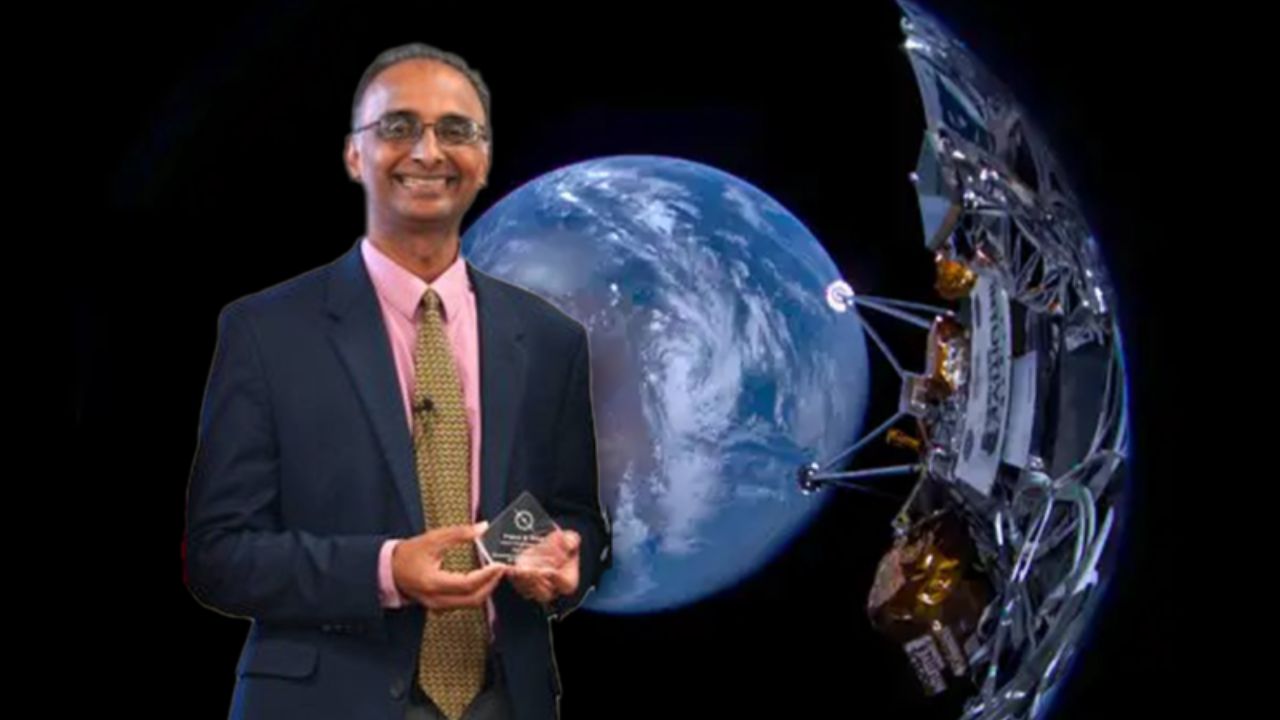In order to allow Oddie to use a NASA Doppler lidar payload that was initially meant to be a technology demonstration, he and his crew uploaded a software patch. Indian American engineer Prasun Desai is a member of the team that worked on the historic soft moon landing of the Odysseus lander. He is currently the deputy associate administrator of the Space Technology Mission Directorate at NASA Headquarters. Intuitive Machines, a Houston-based company, is the creator and operator of Odysseus, also referred to as “Odie.” Yesterday, it touched down on the moon, becoming the first privately built spacecraft to do so and the first American spacecraft to do so in more than 50 years. The space agency declared, “The first CLPS, or Commercial Lunar Payload Services, mission carrying the agency’s science and technology demonstrations successfully landed on the moon at 6:23 p.m. on Feb. 22, with the last-minute assistance of a NASA precision landing technology.” In order to complete an extra moon orbit, the landing was postponed by two hours. “Laser rangefinders on the lander, a key instrument to enable a precise landing, were not working properly,” the company said, according to SpaceNews. According to the report, the controllers had to upload a software patch in order for the lander to use a NASA Doppler lidar payload that was meant to be a technology demonstration instead. During NASA’s livestream of the moon landing, Desai stated, “We were not planning to use it in line with the actual mission coming down to the landing, but now we are.” “The main system to assist in providing the velocity and altitude information is the payload,” he said. “Most of the payloads, or scientific instruments on lunar lander, have already provided good data and are working properly,” he confirmed during a televised news conference on the landing today. NASA claims that the Commercial Lunar Payload Services programme, or CLPS, is what brought about the Intuitive Machines mission. As part of its Artemis programme, which aims to send humans back to the moon as early as 2026, NASA gave Intuitive Machines a $118 million contract to deliver six instruments to the moon surface. Six NASA payloads were transported by the IM-1 mission as part of the Commercial Lunar Payload Services (CLPS) programme, according to SpaceNews. The task order for the mission was awarded in 2019 and, after revisions, was valued at $118 million. A navigation beacon, a radiofrequency fuel tank gauge, a navigation Doppler lidar, and a camera to monitor dust plumes raised by the lander’s engine were among the technology demonstration payloads that were prioritised. A radioastronomy instrument and a laser retroreflector were among the other NASA payloads. Desai has spent thirty-three years at NASA. According to his NASA profile, over the last 13 years, “he has helped to establish the Space Technology Mission Directorate for development of next-generation space technologies and capabilities at NASA Headquarters.” He worked as a senior systems engineer at NASA Langley Research Centre for 20 years prior to that. He has “contributed to the design, development, analyses, and flight operations of numerous NASA missions pertaining to entry, descent, and landing of probes at Mars and Earth, including Genesis, Mars Phoenix Lander, Stardust, and Mars Exploration Rover” He supports executive leadership, overall strategic planning and direction, and efficient management for all components of the Space Technology Programmes in his capacity as deputy associate administrator of the Space Technology Mission Directorate. Along with supporting the development of overall NASA planning, policy development, and programme integration activities, he helps plan, direct, coordinate, and evaluate the entire range of Space Technology programmes and activities. For his significant contributions over the course of his NASA career, he has been recognised with multiple awards from NASA, including two Exceptional Engineering Achievement medals, an Exceptional Achievement medal, an Outstanding Leadership medal, a Presidential Rank Award, and an Exceptional Service medal. The American Institute of Aeronautics and Astronautics (AIAA) also presented him with the 2005 National Engineer of the Year Award. He graduated from Rutgers University with a B.S. in Mechanical Engineering, George Washington University with an M.S. in Astronautics, and the University of Illinois with a Ph.D. in Aerospace Engineering. He has written or co-written more than 60 technical publications, and he is an Associate Fellow of the American Institute of Aeronautics and Astronautics. Being a frequent speaker, he is asked to speak at different events to encourage students to pursue careers in math and science and to advance science education and science literacy. In 2008, 2009, and 2011, the NASA Langley Research Centre named him “Speaker of the Year.” In 2012, he was admitted into the NASA Langley Speaker Hall of Fame.

Indian American Engineer Prasun Desai, a Key Member of NASA Team Behind Odysseus Lander’s Historic Soft Moon Landing
Prev Post
Law Panel Recommends a Comprehensive
Next Post
NRIs in the US: Can

